The following information on chord substitution is excerpted from Chapter 1 of Reharmonization Techniques by Randy Felts, published by Berklee Press.
If reharmonization is like painting a car, then chord substitution is like choosing a different shade of the same color—going from blue to indigo or rose to pink. Chord substitution involves replacing a chord with another that has a similar harmonic function. It allows you to change the sound of a tune while still retaining much of its original color.
Chord Families and Their Function
In order to use chord substitution as a reharmonization technique, you must understand the division of the seven diatonic chords into three groups or families. Each of these chord families has a function. A chord’s function is its tendency to move or remain stable within a musical phrase. Let’s use the key of C as an example.

Tonic Family
The tonic family of chords has a resting function. Chords in this group tend to sound stable. They have little sense of forward motion and are almost always found at the phrase endings of popular and standard tunes. Diatonic chords built on the first, third, and sixth degrees of a scale are the members of this group.
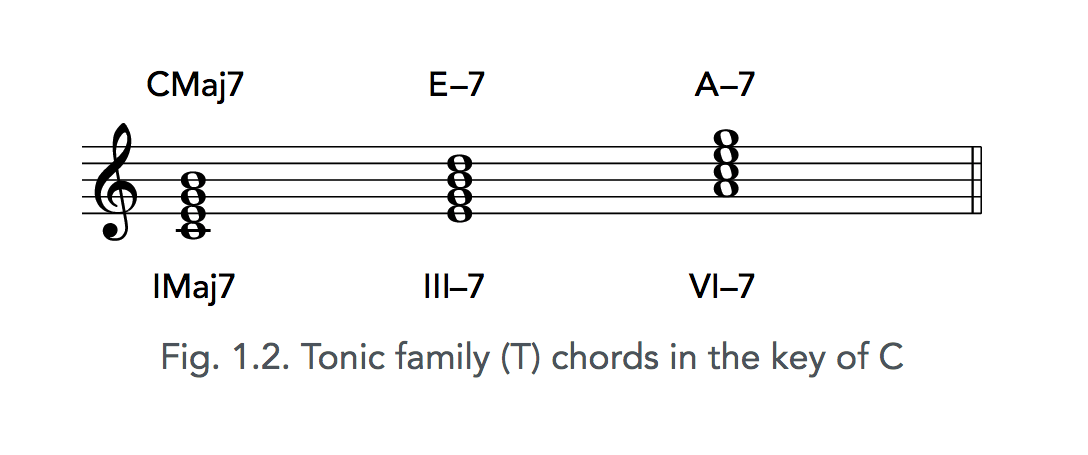
Tonic chords share several common tones. The chords are considered restful because they do not contain the fourth degree of the scale, which is F in the key of C. The fourth degree of any major scale is known as a tendency tone—it tends to lead to the third degree of the scale when played over IMaj7.
Subdominant Family
Chords in the subdominant family have a moderate tendency to move ahead within the musical phrase. All chords in this family contain the restless fourth degree of the scale. Chords built on the second and fourth scale degrees make up this group. The V7sus4 is also included in this family, because it contains the fourth scale degree instead of the third. (Using a suspended fourth instead of a third eliminates the tritone that gives a dominant family chord its characteristic sound. The tritone function is described below.)
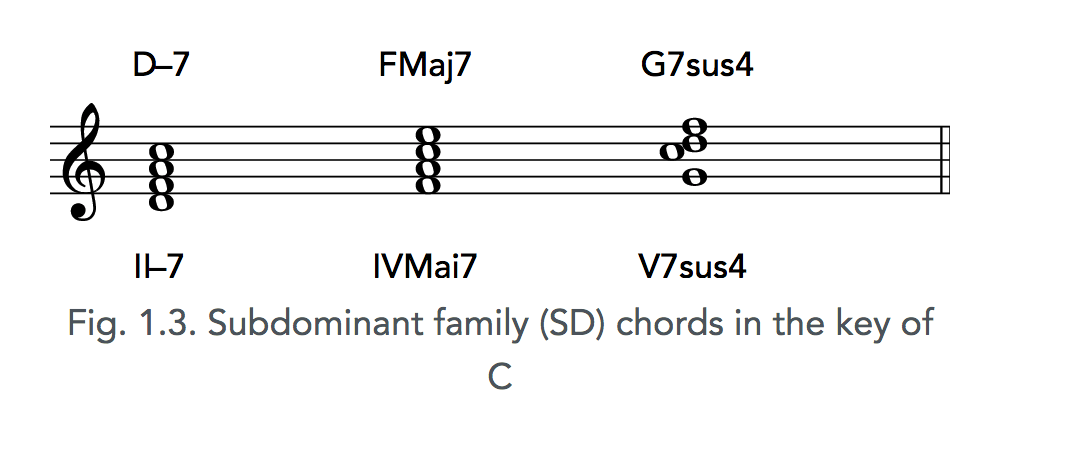
Dominant Family
Chords in the dominant family sound unresolved and have a strong tendency toward resolution. They are said to have a “moving” function. Dominant chords almost always precede phrase endings in popular and standard tunes. The chords V7, VII–7(♭5), and V7sus4 are in this family. (The V7sus4 chord has a dominant function when it resolves directly to IMaj7, even though it lacks the tritone interval.)
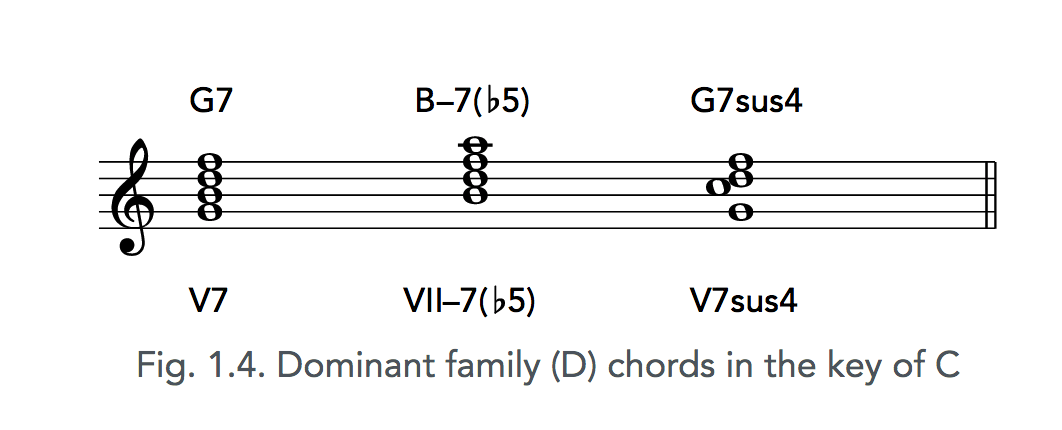
V7 and VII–7(♭5) share many common tones. They also contain both the fourth and seventh scale degrees. The intervallic distance between these two notes is called a tritone, also known as an augmented fourth. The tritone’s highly restless sound produces a strong sense of forward motion. The tritone formed by the third and seventh of a dominant chord creates the chord’s strong forward motion. Dominant family chords often resolve to a chord in the tonic family.
TAKE THE REHARMONIZATION TECHNIQUES COURSE AT BERKLEE ONLINE
How Chord Substitution Works
The following examples explore how chord substitution works.
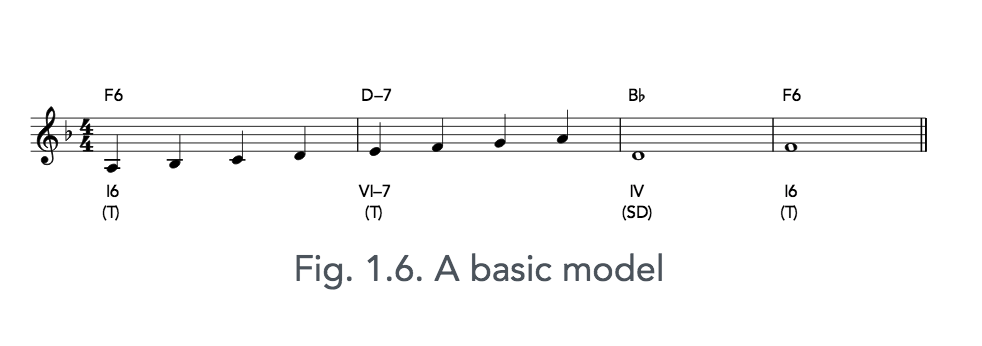
Below, chord substitution modifies the model. Note that the chord function is kept the same in each measure. Look closely at the musical example to:
- Verify the functional analysis of each chord in the original phrase.
- Observe the substitution of other chords that have a similar function in the key.
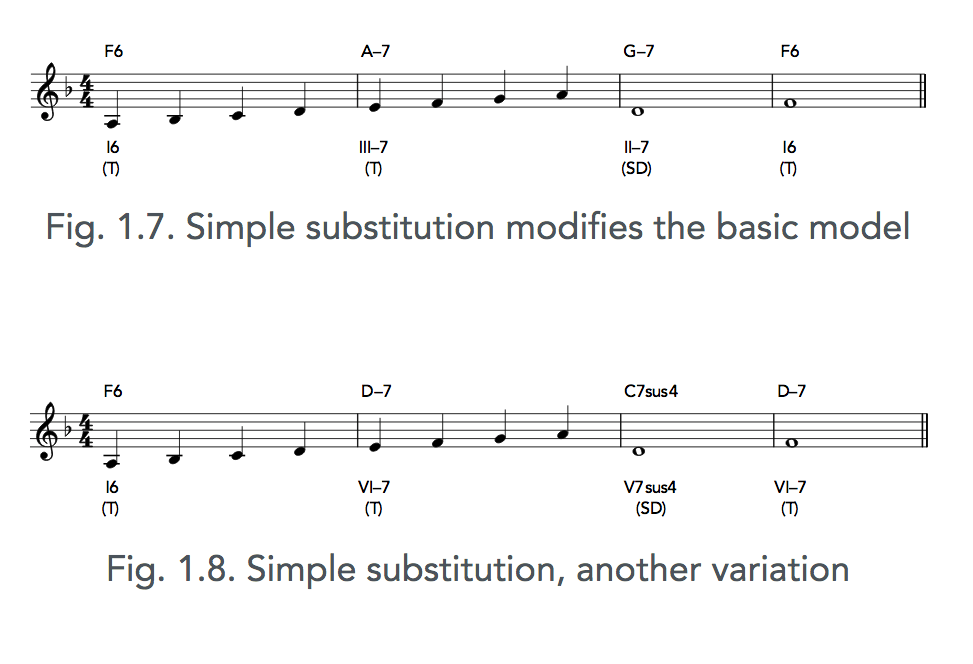
STUDY MUSIC THEORY AT BERKLEE ONLINE











